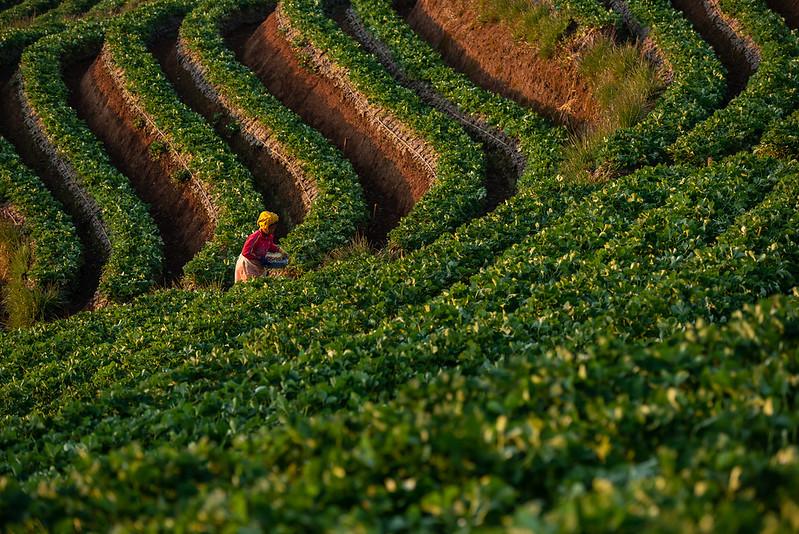
Data are crucial to informing public policies, achieving the Sustainable Development Goals (SDGs) and monitoring progress. Without gender-specific data, it is difficult to advocate for change and to convince decision-makers to act. But are enough gender data available to deliver on our promise of leaving no woman or girl behind by 2030?
As of December 2020, we have 39% of the gender data we need to monitor the SDGs – up from just 33% in 20191. These calculations are based on 72 gender-related indicators2, which include 10 new indicators added in 2020 – on food insecurity, health workers by type of occupation, educational level and completion rate, and others. This is welcome news, given an otherwise dismal 2020.
This increase is also notable, given the disruptions in data collection most national statistical offices face due to COVID-19. However, most of the increase was based on data collected prior to the pandemic. Had it not been for COVID-19, the increase could have been far greater.
Data investments are paying off
This tells us that investments in increasing data collection and use are bearing fruit. It reflects huge efforts by key actors, particularly national statistical offices as well as governmental and non-governmental organizations, the gender data programmes of international agencies and the donors that fund them. Among these programmes is Women Count, UN Women’s global strategy to produce more and better gender data to support SDG monitoring. Each of the countries we support has now reached at least 40% gender data availability, with Albania, Nepal and Senegal each adding around 10% more gender data in 2020. Visit our country fact sheets for gender data availability and performance for more countries.
Percentage of available gender-related SDG data in Women Count supported countries, 2019 and 2020
For details on the analysis, see the methodological note.
Not enough
At the same time, we’re still too far behind. No region had data available for even half of the SDG gender indicators. Europe and North America led the pack, with 44 per cent of gender data available. They were followed by Northern Africa and Western Asia (40%), Latin America and the Caribbean and Central and Southern Asia (39%), Eastern Asia and South-Eastern Asia (38%), and Sub-Saharan Africa (37%), with Oceania furthest behind (at 24%).
Gender data availability for SDG monitoring by region, 2019 and 2020
For details on the analysis, see the methodological note.
Zeroing in on individual countries, only 13% of the 193 UN Member States had data for at least half of the gender indicators. Three of the top five countries were in Latin America, with Mexico in the lead at 63% data availability, closely followed by Colombia (61%), which held the top spot in 2019, and Peru with 59%. Belarus came third, with 60%, and the Netherlands was fifth, with 58% data availability. The Netherlands also added the most gender data (18%) over the 2019–2020 period. At the other end of the spectrum, a disappointing 13% of countries only had data for less than a quarter of the indicators.
More than five years after world leaders committed to deliver a world that is just and equitable for everyone, we still do not have information for nearly two-thirds of gender equality and women’s empowerment indicators.
Total UN Member states with available gender-related SDG data, by goal, 2020
For details on the analysis, see the methodological note.
Further, even if we take on a heroic assumption – that we will maintain this rate of increase in data availability every year until 2030 – our estimates show that we still won’t have all the needed data by 2030. Moreover, we suspect that COVID-19 will shrink these increases in gender data availability and impinge on access to updated data, although the evidence will only be borne out in the coming years.
In short, business as usual will not get us to where we need to be.
Estimated percentage of data availability of gender-related SDG indicators if the rate of increase between 2019–2020 is maintained from 2020–2030
For details on the analysis, see the methodological note.
Collective efforts are making inroads and we must boost them
Together with UNDP and in collaboration with the Pardee Center at the University of Denver, UN Women has published a supplementary series to SDG 1.1.1 on poverty with estimates on extreme poverty by sex and age for 129 countries and areas, taking into account the economic fallout from the pandemic. For SDG 5.a.1, where only 10 countries have data on women’s land asset ownership, UN Women and FAO are supporting more than 30 national statistical systems to report on the indicator. And for SDG 5.1.1, on legal frameworks to promote and enforce gender equality, while data are presently available for 53 countries, UN Women, the World Bank and the OECD are increasing that number to 95 countries this year. We need more efforts and investments like these.
To get us to where we need to be, in 2021 and beyond, we need bold and decisive investments to ensure that gender data are produced and used to spark the changes we want to see.
Related: Country fact sheets
Jessamyn Encarnacion is the Statistics Specialist for UN Women’s global gender data programme, Women Count. Before joining UN Women, she worked for more than 15 years with the Philippines National Statistical Coordination Board, rising from an understudy in the gender statistics sector in 1997 to Director of the Social Statistics Office in 2013 and capped her national portfolio as interim Assistant National Statistician of the Philippine Statistics Authority during its formative period in 2014-15.
Samrat Maskey is the Data Analyst and Database Coordinator for UN Women’s Women Count programme. He has worked for more than 10 years with UNSD and FAO mainly involved in statistical databases such as the Minimum Set of Gender Indicators and the UN Disability Statistics Database, and has worked on modernizing time use data collection.
